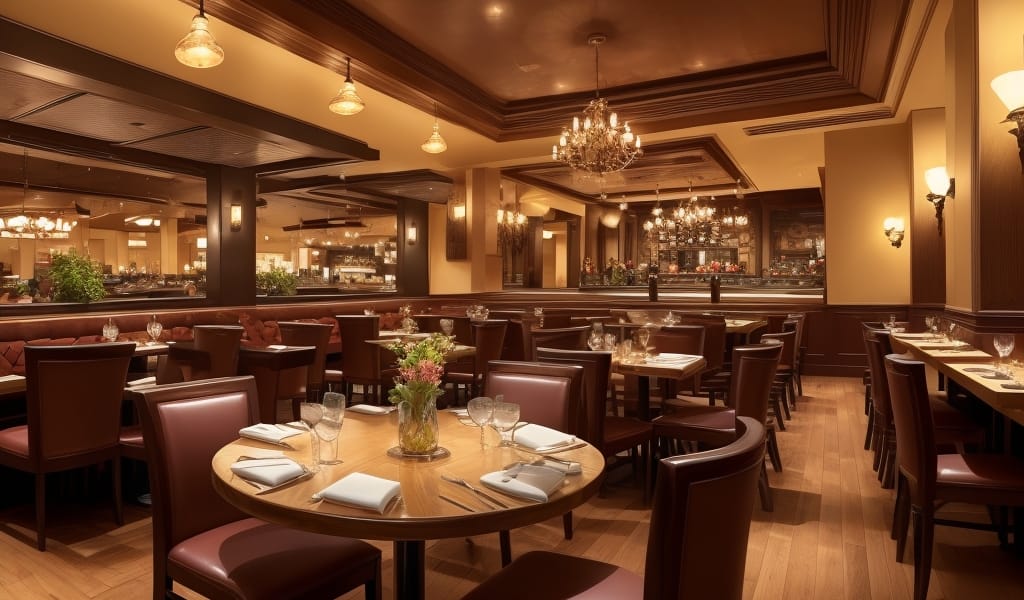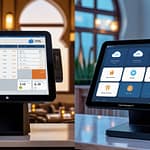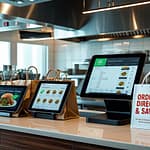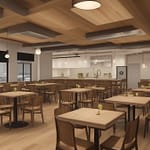Key Takeaways:
- Implement upselling techniques, such as suggesting more expensive dishes or additional sides, to increase the average check size.
- Focus on customer retention strategies, such as loyalty programs or personalized offers, to encourage repeat visits.
- Optimize the menu layout and design to highlight high-margin dishes and influence customer choices.
- Train staff to provide excellent customer service, which can improve customer satisfaction and stimulate repeat business.
- Organize special events or themed evenings to increase revenue without attracting new customers.
Introduction
Every restaurant manager dreams of higher sales, but acquiring new customers can be costly and time-consuming. Fortunately, boosting your restaurant sales doesn’t always mean bringing in new people. By focusing on upselling, retention, and enhancing the customer experience, you can significantly increase your revenue from existing patrons. This guide will explore proven strategies that help restaurant professionals leverage their current customer base to improve sales and profitability.
Enhance Your Upselling Techniques
Upselling involves encouraging customers to purchase higher-priced items or additional products, resulting in increased revenue per transaction. Here are some practical methods to improve your upselling strategy:
Train Your Staff for Effective Upselling
Your employees play a critical role in successful upselling. Provide regular training sessions to help your servers understand your menu items better and confidently recommend dishes and beverages. Training should cover:
- Detailed knowledge of menu items, including ingredients and preparation methods.
- Understanding which items pair well together, such as wine selections with entrées.
- Role-playing exercises to practice natural and enthusiastic recommendations.
For example, a server suggesting a side salad or premium dessert to complement a customer’s meal can significantly boost overall sales per table.
Strategically Design Your Menu
Menu design significantly influences customer choices. Highlighting or strategically placing premium items and add-ons can increase their visibility and desirability. Consider these tactics:
- Use clear headings or borders to draw attention to high-profit items.
- Position profitable dishes near the top or right-hand side, where customers naturally look first.
- Include appealing descriptions to entice customers and justify higher prices.
Restaurants like Olive Garden have successfully employed menu engineering, prominently featuring their signature dishes and add-ons, effectively increasing average order values.
Focus on Customer Retention
Keeping existing customers coming back regularly is essential for long-term profitability. Loyal patrons not only visit more frequently but also tend to spend more per visit.
Implement a Loyalty Program
Loyalty programs encourage repeat visits and customer loyalty by offering incentives for frequent dining. Your loyalty program can include:
- Points systems redeemable for discounts or free items.
- Exclusive offers or invitations to special events for program members.
- Birthday or anniversary promotions for personalized customer engagement.
Starbucks exemplifies successful customer retention through their rewards program, which has significantly contributed to their repeat business and higher sales.
Personalize Customer Experiences
Customers appreciate personalized experiences and are more likely to return if they feel valued. Enhance personalization by:
- Training staff to remember regular customers’ names and preferences.
- Using customer data from loyalty programs to target personalized promotions.
- Sending personalized follow-up messages or thank-you notes after visits.
By creating genuine connections, you build customer loyalty and encourage repeat visits, increasing overall lifetime value.
Optimize Your Table Turnover Rate
Improving your table turnover rate allows you to serve more patrons per day, thus increasing overall sales without necessarily attracting new customers.
Streamline Your Service Process
Efficiently managing service flow can reduce wait times and increase table availability. Steps to streamline include:
- Training staff to promptly greet customers, take orders, and deliver food.
- Using technology like handheld POS systems to expedite order processing.
- Regularly reviewing operational procedures to eliminate bottlenecks.
Fast-casual chain Chipotle has optimized their serving process, significantly increasing their daily customer capacity without needing additional tables or seating.
Encourage Reservations and Manage Seating Efficiently
Encouraging customers to book reservations helps manage peak hours effectively, reducing wait times and maximizing seating capacity. Effective strategies include:
- Providing online reservation systems for ease of booking.
- Implementing clear reservation policies to minimize no-shows and delays.
- Using reservation data to anticipate busy periods and adjust staffing accordingly.
Restaurants using reservation platforms like OpenTable have successfully improved table management, resulting in increased revenue through better utilization of existing seating.
Enhance Your Beverage and Dessert Sales
Beverages and desserts typically feature high profit margins. Encouraging customers to add these items can significantly boost your overall sales without needing new patrons.
Create Appealing Beverage Promotions
Attractive beverage offers can drive additional sales. Ideas for effective promotions include:
- Happy hour discounts on premium beverages.
- Seasonal drink specials to create urgency and interest.
- Pairing suggestions on the menu to encourage beverage orders.
For example, TGI Fridays has successfully utilized beverage promotions like discounted cocktails during specific times, driving incremental sales from their existing customer base.
Offer Visually Appealing Desserts
Desserts can significantly increase the average bill. To boost your dessert sales, consider:
- Presenting desserts prominently in display cases or on table tents.
- Training servers to recommend desserts during ordering or after meals.
- Offering shareable or sampler-sized desserts to entice customers.
Restaurants such as The Cheesecake Factory prominently feature their desserts, leading to consistently high dessert sales per table.
Leverage Off-Peak Hours and Special Events
Maximizing sales during slower periods can significantly increase your revenue without needing additional customers during peak hours.
Introduce Off-Peak Promotions
Offering incentives during less busy periods attracts existing customers to visit more frequently or at non-peak times. Examples include:
- Discounted lunch specials to boost midday visits.
- Early bird dinner specials to attract diners before peak evening hours.
- Weekday-only offers to increase mid-week business.
Applebee’s has successfully utilized off-peak promotions, increasing customer frequency and sales during traditionally slow periods.
Host Regular Events and Entertainment
Special events can increase customer loyalty and drive additional visits. Consider hosting:
- Live music or entertainment nights.
- Cooking classes or wine tastings for regular customers.
- Themed dinners or holiday events to create excitement and urgency.
Restaurants that offer regular events, like trivia nights or live music evenings, frequently see an increase in customer visits and higher spending per customer.
Conclusion
Increasing restaurant sales doesn’t always require attracting new customers. By effectively implementing upselling strategies, focusing on retention, optimizing table turnover, enhancing beverage and dessert offerings, and maximizing off-peak opportunities, you can significantly boost your revenue with your existing customer base. Focus on consistently delivering exceptional experiences and personalized service to encourage repeat visits and higher spending. Start applying these proven strategies today to achieve sustainable sales growth for your restaurant.






Comments
Be the first to comment on this article.